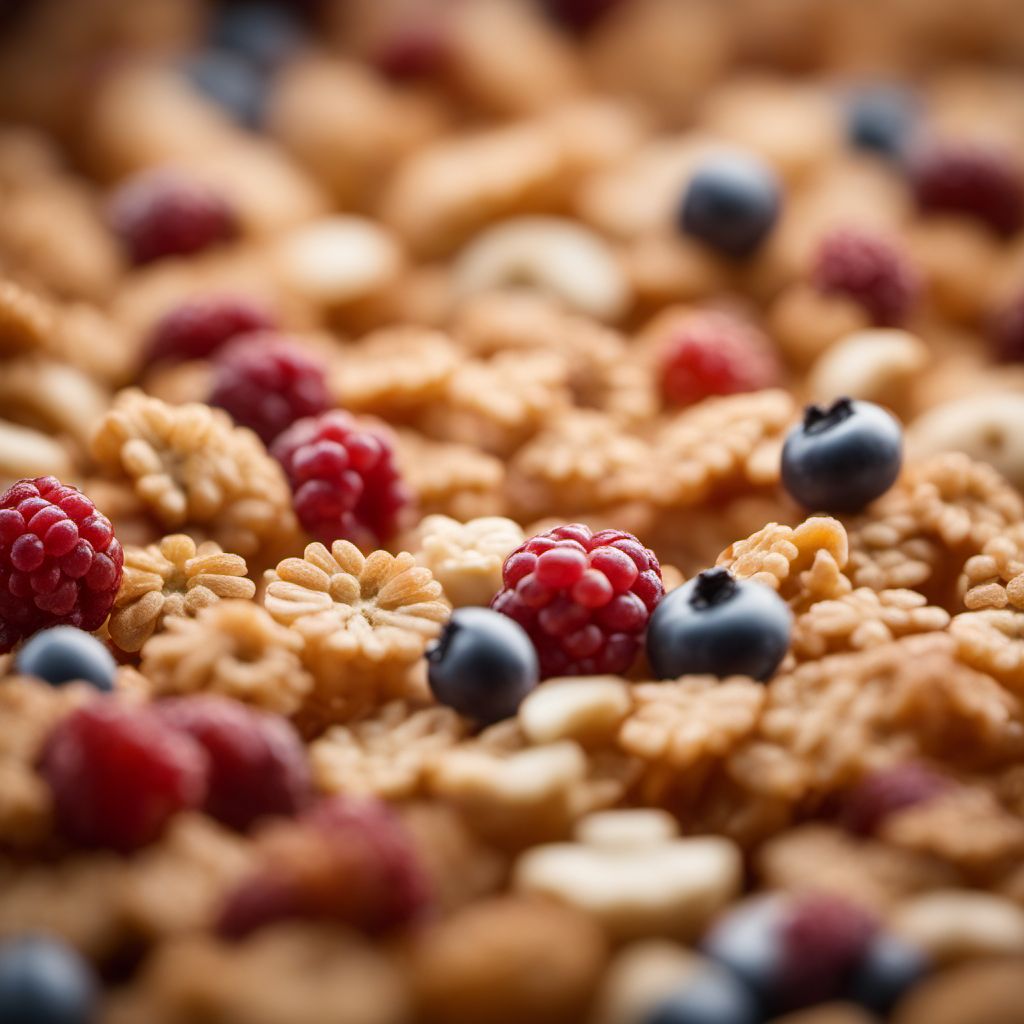
Ingredient
Cereal bars
"Nutritious Energy Boosters: Exploring the World of Cereal Bars"
Cereal bars are compact, portable snacks made by combining a mixture of cereals, nuts, seeds, dried fruits, sweeteners, and binders. They come in various shapes and sizes, with a chewy or crunchy texture depending on the ingredients used. These bars often have a sweet taste due to the inclusion of honey, maple syrup, or other natural sweeteners. They can be customized with different flavors and toppings, making them a versatile and enjoyable snack option.
Origins and history
The concept of cereal bars can be traced back to ancient civilizations, where people combined grains, fruits, and honey to create energy-dense snacks. In the early 20th century, cereal bars gained popularity as a convenient and nutritious food option. They were initially marketed as health foods and gained further recognition during World War II when they were included in military rations. Since then, cereal bars have evolved to cater to various dietary preferences and have become a staple in the snacking industry.
Nutritional information
Cereal bars are a great source of energy, providing a balanced combination of carbohydrates, proteins, and fats. They are often fortified with vitamins and minerals, making them a convenient way to supplement one's diet. The nutritional content may vary depending on the specific ingredients used, but they generally offer a good amount of fiber, vitamins, and minerals, while being relatively low in calories.
Allergens
Some cereal bars may contain allergens such as nuts, peanuts, soy, or gluten. It is important to carefully read the ingredient list and allergen information before consuming, especially for individuals with specific dietary restrictions or allergies.
How to select
When selecting cereal bars, look for options that have a short ingredient list with recognizable, whole food ingredients. Avoid bars with excessive added sugars or artificial additives. Opt for bars that are made with whole grains, nuts, seeds, and dried fruits for a healthier and more nutritious choice.
Storage recommendations
To maintain the freshness and quality of cereal bars, store them in an airtight container or individually wrapped to prevent moisture absorption. Keep them in a cool, dry place away from direct sunlight. Proper storage will help extend their shelf life and preserve their texture and taste.
How to produce
Amateur bakers can produce cereal bars by combining a mixture of cereals, nuts, seeds, dried fruits, sweeteners, and binders. The ingredients can be mixed together, pressed into a baking dish, and baked until firm. Once cooled, the bars can be cut into desired shapes and sizes.
Preparation tips
Cereal bars can be enjoyed straight out of the package as a quick snack. They can also be crumbled over yogurt or used as a topping for smoothie bowls. For a fun twist, try melting dark chocolate and drizzling it over the bars before refrigerating for a delicious treat. Experiment with different combinations of ingredients to create your own unique cereal bar recipes.
Culinary uses
Cereal bars are commonly enjoyed as a convenient snack on their own. They can also be crumbled and used as a topping for ice cream, yogurt, or oatmeal. Additionally, they can be incorporated into homemade granola or trail mix recipes for added texture and flavor.
Availability
Cereal bars are widely available in grocery stores, supermarkets, and health food stores worldwide.

